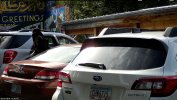Dashmellow
Well-Known Member
- Joined
- Sep 22, 2013
- Messages
- 18,670
- Reaction score
- 19,276
- Location
- Uncanny Valley (●_●)
- Country
- United States
- Dash Cam
- Umpteen
I may invest in something better than a craft knife and a small sheet of sandpaper.
You need a cutting laser with a 24mm beam!



